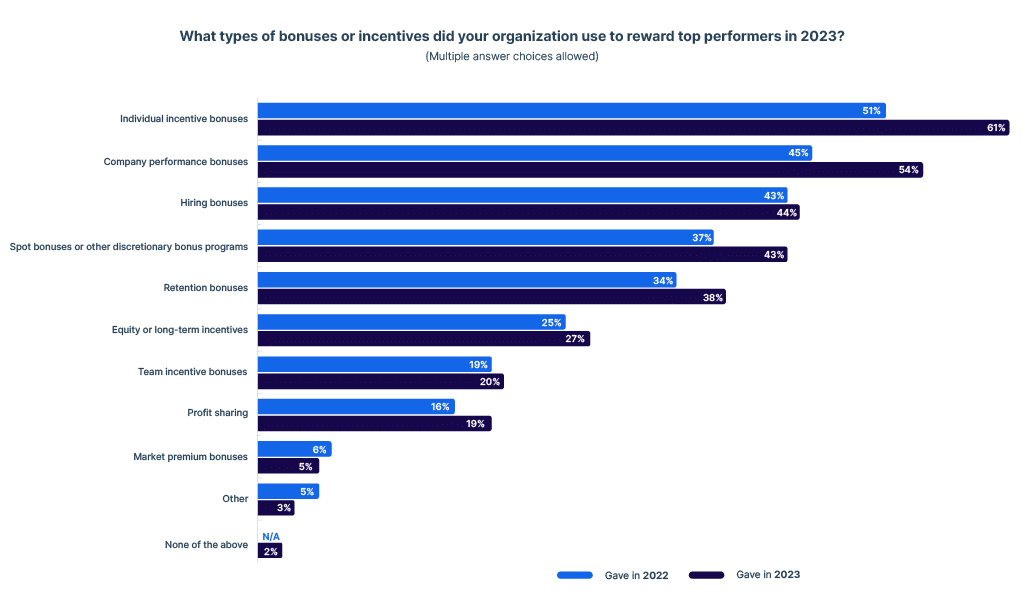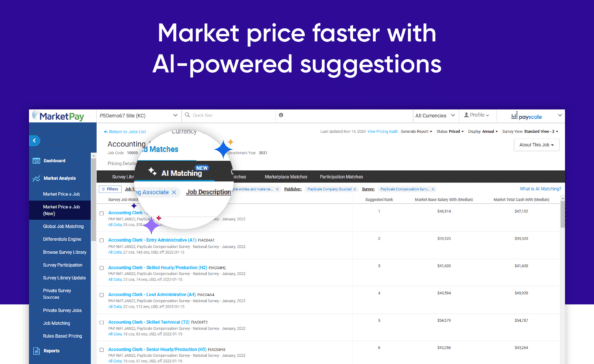Voluntary turnover severely harms an organization’s bottom line. Some estimates put the cost of replacing an existing employee at 2x their annual salary. And this doesn’t even factor in the productivity losses from disengaged workers still on the payroll.
How can organizations solve the problem of employee disengagement and turnover? New research by Christos A. Makridis, Ph.D. from Stanford, offers a solution: profit sharing.
Leveraging three years of online salary survey data from Payscale, Makridis’ recent academic paper published in the “International Review of Applied Economics” reports a statistically significant increase in job satisfaction among employees who participate in company profit sharing, leading to lower turnover and higher engagement.
According to the study, “profit sharing remains predictive of employee engagement even after controlling for many non-wage amenities, individual demographics, and industry.” In other words, profit sharing is a strong incentive for keeping employees engaged and productive across many industries and independent of other incentives.
A separate case study by a Canadian landscaping company reinforces these findings. Implementing a profit-sharing structure helped this organization secure the worker buy-in it needed to thrive.
This should encourage HR leaders to consider profit sharing as a part of their total rewards strategy.
CTA: Don’t miss our webinar: Total rewards: navigating the current landscape and employee expectations
Is profit sharing less popular than it should be?
According to Payscale’s 2024 Compensation Best Practices Report, 55 percent of organizations are “very confident” or “fairly confident” that their total rewards package is effective in attracting and retaining talent. The other half of organizations are “not confident” or “neutral,” meaning there’s room for improvement in total rewards for many organizations.
On a scale of 1-5, how confident are you in your current total rewards packages being effective in attracting and retaining talent?
Not at all confident 3%
Not confident 11%
Neutral 30%
Fairly confident 43%
Very confident 12%
We have also surveyed organizations about the types of bonuses or incentives they use to reward top performers. Less than a fifth of organizations (19 percent) cite profit sharing as one of their incentives, making it a differentiator.

Profit sharing is particularly effective at retaining employees since it’s a benefit that workers secure only if they remain at their organizations. It also provides a direct incentive for employees to work harder to increase profitably, given that they will share in those profits.
Reasons to consider profit sharing as part of total rewards
One of the biggest reasons to consider profit sharing today is that it decreases distrust between employees and employers. In recent decades, and especially since the pandemic, employees feel demoralized when organizations announce record profits following layoffs, years without pay increases, and rising wealth inequality.
If employers want to retain and engage top talent and avoid the high costs of voluntary turnover, they should consider incentivizing employees through profit sharing.
In addition to fostering employee engagement, profit sharing also forces financial transparency. This is because it requires open disclosure of how profits are calculated and distributed.
This is not to say that profit-sharing arrangements are easy to implement, especially for larger organizations with thousands of employees. Distilling complex financial disclosures into digestible employee “profit shares” presents hurdles. However, there are technology solutions such as financial dashboards and open accounting systems that make it easier for employees to trust the profit-sharing process.
Finally, profit sharing boosts employee morale. Higher morale benefits an employer’s brand and company culture, taking employee engagement beyond increased productivity and impacting broader metrics, such as talent acquisition and retention, job satisfaction, and overall enthusiasm for an organization’s mission.
Rethinking total rewards
Recent research around profit sharing encourages organizations to reexamine their total rewards strategy, which begins with getting compensation management right. The correct mix of monetary and non-monetary rewards depends on an organization’s compensation strategy and what it wants to achieve.
As an organization’s compensation strategy matures, it will move away from simply considering base pay and benefits (the table stakes of modern comp) to more appealing total rewards packages for employees. Employers should begin to think about how their total rewards strategy intersects with their compensation strategy to deliver a compelling employee value proposition.
Your employees are more than a number — treat them like it.















